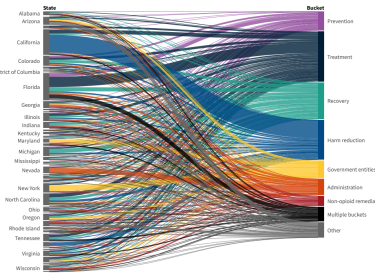
How The Opioid Epidemic Affects Women—And How You Can Help
America’s opioid crisis doesn’t discriminate. It touches the lives of Americans of varying age, location, race and gender. But data shows that women are disproportionately affected by the epidemic. According to the National Women’s Health Network, overdose deaths among women have increased 400 percent compared to 237 percent among men.1
Many women, after even routine operations, are sent home with prescriptions for more opioids than necessary to treat their pain. A study from Brigham and Women’s Hospital and Harvard Medical School found that, following C-sections, women were prescribed twice as many opioids as needed, resulting in an average of about 15 excess pills.2
It’s statistics like these that illustrate the extent to which opioid overprescribing after surgery has become the norm, unintentionally putting patients at risk. In 2016, three million people prescribed opioids in the postsurgical setting went on to persistent use, meaning they were still taking these medications three to six months after their procedure. Two million of those people were women.3
That’s in part why Shatterproof and Morning Consult have commissioned a survey of American women on their perceptions of the state of the opioid epidemic in the U.S. In this national poll, only 20 percent of women who underwent surgery and required pain medication after the procedure say they were screened for substance use disorder (SUD) via consultation of their patient history.
That only one in five of women reported being screened before receiving an opioid prescription is shocking, especially when considering one-third of women polled report having a family member or knowing someone who has suffered from a SUD. All patients have the right to know that there are non-opioid pain medications that already exist to help treat pain after surgery. In this area, too, the information gap presents a problem; only three in ten women say they were informed of these alternatives before receiving an opioid prescription.
That leaves most of the population with little knowledge, or choice, to avoid opioids after surgery, even though the majority of women indicated they would prefer a non-opioid, non-addictive pain reliever after surgery, and 67 percent believe these medications are better for patients’ physical health.
The gap between the desire for opioid alternatives and the ability to access to them has women turning to lawmakers for solutions. Eighty-four percent of women support improving patient access to non-opioid medications, and 79 percent agree that payment policy should change to grant patients access to non-opioid pain management options.
The lack of knowledge around this issue, and the remaining urgent need to address it, may be related to another critical area we surveyed – that of stigma. It’s no secret that stigma is strongly associated with addiction, and 78 percent of women say there is shame or stigma associated with substance use disorder.
That barrier has real implications. Sixty-two percent of women cite fear of what others would think as a major reason that people wouldn’t seek treatment – more so than those focused on even cost of treatment or insurance benefits.
If you agree that these statistics are unacceptable, there are a couple of things you can do right now to help us turn the tide.
First, join the Shatterproof community. Sign up for our email list below. You’ll be the first to hear about stigma-shattering events and opportunities to advocate for change.
Second, download our printable guide, 12 Questions to Ask Your Doctor Before Taking Opioids, and share it with the women in your life. These simple questions will help you initiate a conversation with your doctor about developing a pain treatment plan that works best for you.
Together, we can foster a health care system that treats women’s pain without putting them at increased risk.
Shannon Hartley is Shatterproof's Chief Marketing Officer.





